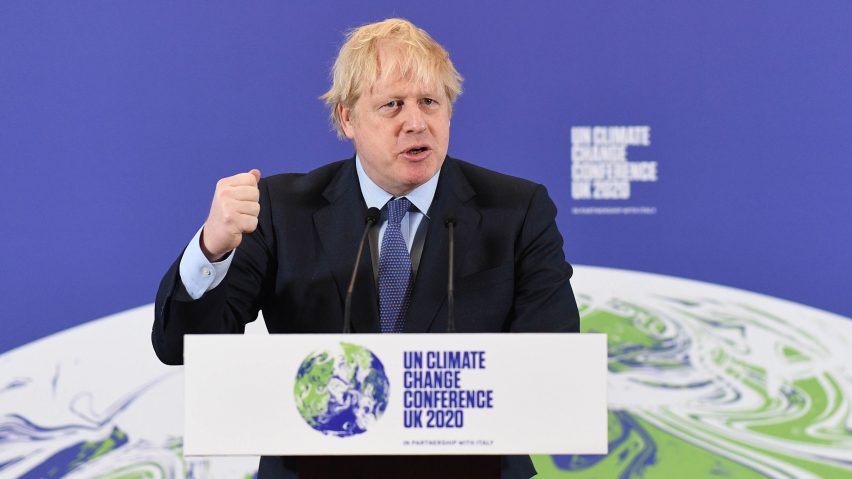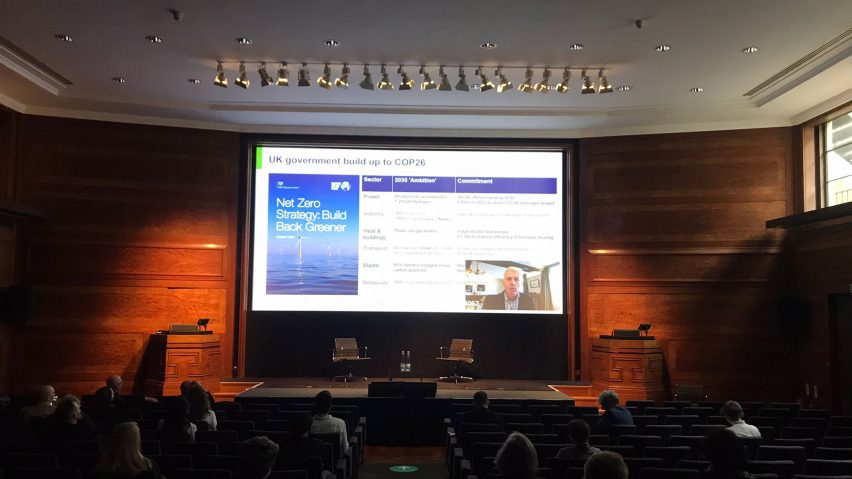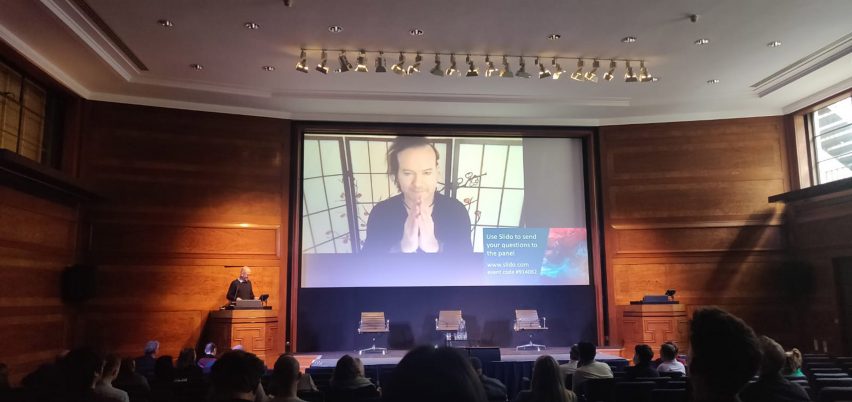
UK government has "no intention" of delivering on its COP26 pledges, Cambridge scientist tells RIBA climate conference
The UK's net-zero strategy is as unrealistic as "magic beans fertilised by unicorn's blood" and will fail to deliver the emissions reductions promised by 2030, according to Cambridge University engineering professor Julian Allwood.
The government's roadmap is based on a "fantastically religious belief", Allwood said, that fledgling, future technologies can deliver the 68 per cent cut in emissions that needs to be made in the next nine years to keep the country's COP26 pledge.
But the key pathways outlined in the government's strategy, including carbon capture and storage, emissions-free hydrogen and fuels made from biomass, are all described as ambitions for 2050 rather than firm pledges that can be achieved by 2030, he said.
"What matters in this document is the word commitment," Allwood explained in a keynote at RIBA's Built Environment Summit.
"And the commitment is so small compared to the ambition that it is an absolute certainty the government has no intention of delivering on the 2030 pledge that it has made to the COP26."
New technologies not scalable at necessary speed
The 68 per cent reduction in emissions from 1990 to 2030 that was promised by the UK ahead of this year's climate conference, is needed to help keep global warming below the crucial threshold of 1.5 degrees Celcius.
But according to research conducted by Allwood and the UK Fires consortium, which unites academics from six leading universities including Cambridge, Oxford and Imperial College London, none of the technologies favoured by the government are likely to have a significant impact in the time available.
The use of biomass to create fuel for the aviation industry is unsustainable in the long run as it would threaten biodiversity, Allwood explained.
And although hydrogen could be used to power boilers and electric vehicle fuel cells, there are currently no producers in the UK who create emissions-free "green hydrogen" through electrolysis or "blue hydrogen", which sees production emissions captured and sequestered.

Similarly, Allwood argued that carbon capture and storage projects such as Climeworks' direct air-capture plants, won't be able to scale up quickly enough to make a dent in the 10 billion tonnes of CO2 that will need to be removed from the air every year by 2050.
"There are about 20 small projects worldwide, 18 of which are used to get more oil out of the ground," he said, referencing a practice known as enhanced oil recovery whereby captured atmospheric CO2 is pumped into depleted oil reserves to extract the remaining fossil fuel.
"The promises being made by the industry are vastly different from what's actually there," he continued.
"It's a perfectly reasonable thing to pursue but it shouldn't have any place in policy until it has gotten to a greater stage of deployment."
Planning permission process creates delays
The build rate for this kind of publicly-funded infrastructure simply isn't fast enough to meet the targets set out by the government, Allwood argued, referencing the example of Edinburgh's Queensferry bridge.
"It took about 12 to 14 years to build from the point the government commissioned it to when it actually opened, and only half of that is construction time," he said.
"The other half is the processes that a democracy goes through when it decides whether to allocate public money to a project, to acquire land, to consult with communities, to comply with legal and environmental regulations."
This kind of timeline would already rule out any of the above pathways from contributing to the government's 2030 emissions reduction goals.
It also poses an issue for the UK's goal of becoming net-zero by 2050, which relies on carbon capture and storage as a means of offsetting those emissions that cannot be eliminated until the deadline.
Other offsetting schemes such as afforestation are widely criticised and would need to be deployed at a massively increased rate, Allwood explained, given that trees take 10 to 15 years from being planted to start capturing carbon and that they would need to have sequestered enough carbon by 2050 to offset all of the remaining emissions.
"Net-zero doesn't mean anything"
As a result, he argued that we should be aiming for "absolute zero" rather than net-zero by 2050.
This sentiment was echoed by prominent philosopher Timothy Morton, who spoke alongside Allwood at the Built Environment Summit and compared the concept of net-zero to an overflowing bathtub.
The tub represents the atmosphere and the water atmospheric carbon, with net-zero meaning the tub is being minorly drained through carbon removal projects while still being filled with more emissions.
"You've still got the bath full of water," he said. "That's the problem. We have to actually get the bath down lower."
"Net-zero doesn't mean anything," Morton continued. "One of the translations of net-zero by 2050 is: I support mass extinction."
Absolute zero requires giving up cement and air travel
In order to drain the proverbial tub using technologies available today, UK Fires has drafted a plan for how the country could feasible phase out the use of all fossil fuels and switch to renewable electricity as the only form of energy.
This would involve cutting the country's energy use by 40 per cent compared to today's levels through small efficiency measures such as driving less, using smaller cars and investing in heat pumps.
It would also involve giving up plane travel, shipping, cement and eating cows and other ruminants, as they currently have no scalable, emissions-free alternatives.

"Nobody is talking about this in the runup to COP26 and the fantasy that we can find a solution without the public even noticing it is the only one being pursued," Allwood said.
"It's [about] a structural change, not a marginal change. Some sectors have to shut, others are going to grow," he added.
"And there's huge potential for innovation. But it's not the innovation of magic beans fertilised by unicorn's blood, which is all that's in the political climate today. It's new businesses that are truly compatible with zero emissions."
Elsewhere at the Built Environment Summit, which was organised by RIBA and climate action group Architects Declare ahead of COP26, speakers argued that architects should start taking responsibility for decarbonising their buildings rather than blaming clients and the lack of regulations, to help eliminate the 40 per cent of global gas emissions that stem from the built environment.
The main image is by Andrew Parsons for No10 Downing Street.